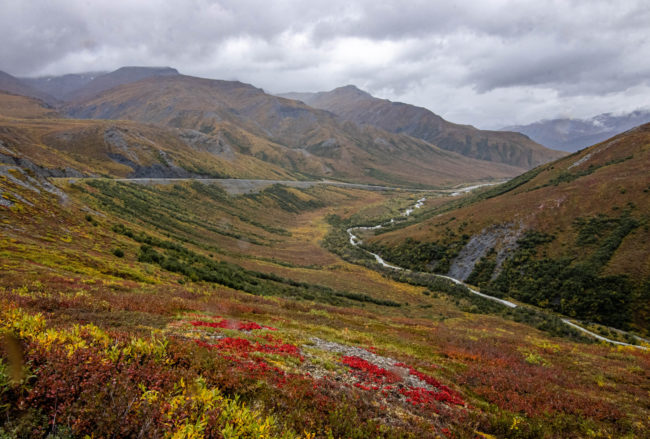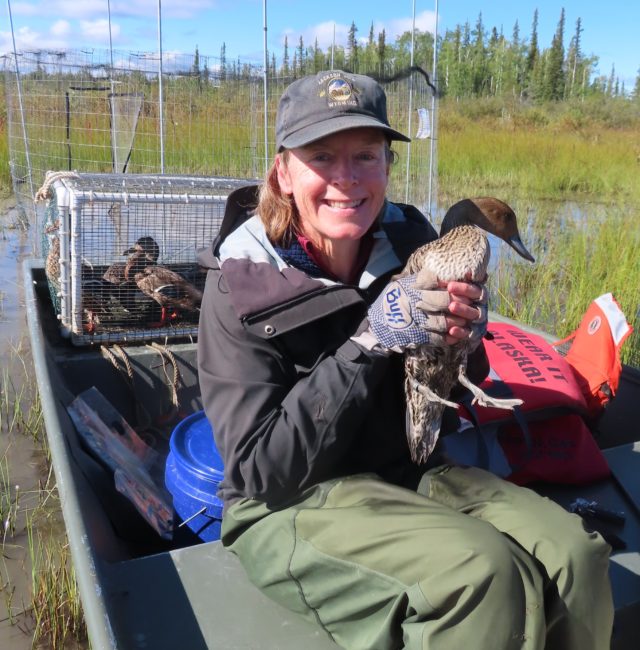By:Pam Seiser, Fairbanks Friend
Three Fairbanks Friends took up the invitation to visit the Arctic Interagency Visitor Center at Coldfoot to help with the Wild and Scenic Rivers Celebration last month. This two day event was organized by Patrick Magrath, Student Conservation Association Intern with the Arctic Refuge. Patrick’s goal was not only to show off the interpretative resources at the center but also outdoor resources surrounding the center. So, Don Kiely, my husband Randy Lewis, and I alternated shifts volunteering at the visitor center with exploring the surroundings. Arctic Interagency Visitor Center at Coldfoot. pc. Randy Lewis The visitor center highlights the neighboring public lands of three agencies: the Fish & Wildlife Service’s (FWS) three National Wildlife Refuges, the famous Arctic Refuge north of the visitor center and the lesser known Kanuti and Yukon Flat Refuges that straddle the Arctic Circle; the Bureau of Land Management’s Dalton Highway corridor; and the National Park Service’s Gates of the Arctic National Park. It is an inviting center, with a small auditorium, a wonderful array of interpretive displays and a cozy corner with a wood stove, chairs and a pile of reading material. Geologists involved in the construction of the road and pipeline will love that large rocks in front of the building are labeled! Also, the tour guide tells us that the center is known for having the cleanest bathroom in 200 miles. Patrick Magrath of the Arctic Refuge with some of the exhibits about Wild and Scenic Rivers. At the end of the first day we arrived at FWS cabins provided for visiting staff just north of the Marion Creek Campgrounds and Coldfoot. We helped set up displays the morning of the event and then served as greeters while Don hiked along the Chandalar Shelf. On Sunday, Don was the greeter, and we drove to Atigun Pass. The evening talks for Wild and Scenic Rivers drew a crowd of 30 people, which was a success. About 75-80 visitors a day dropped by the center. Visitation is high at the start of the summer and drops sharply after July 4th, the start of the mosquito season. When we had no visitors we pumped the staff for information on hikes. We learned Kanuti has hot springs! Milepost 103 is the jumping off point for the 14-mile hike/packboat trip to the hot springs. Inside the Arctic Interagency Visitor Center at Coldfoot. pc. Randy Lewis |









